Made in China
You are what you eat / You are what
you buy
The influence of Chinese markets and shops on Hungarian commerce is considerable not only in economic terms, but also how they affect habits of consumption. For the less well-off strata of society, they are basically, even exclusively, the places where cheap clothes, shoes or sporting goods can be bought. Without these opportunities, their lives would be even more impoverished and desolate. Chinese markets are thus a significant factor in people's sense of well-being (like the proximity of shopping centres), and can be considered a constituent of infrastructure.
We must not forget that goods made in the Far East represent the entire spectrum of quality, and that the calibre of Chinese industry is not inferior to the Western. It is nonetheless a fact that the label "Made in China" will more readily bring associations of short-lived sneakers than their high-quality likes, though both were made in Vietnam; useless plastic toys are more likely to appear before the mind's eye than the latest laptop computers, though they are equally assembled in Taiwan.
Quality, of course, has its price everywhere, though Far Eastern contractors are ready to cater for every need - even if it is the need for low quality. Hungarian consumers are known to be especially price-conscious, so it is not by chance that wholesalers import the cheapest goods, which are by necessity of low quality. So our ingrained association of "Chinese equals cheap equals low-quality" is more a reflection of the general demand of the local market than of the overall performance of Far Eastern industry.
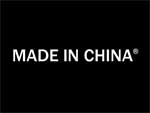 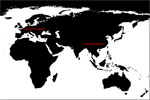
BRAND - The institutionalised inscription is almost a brand name in itself / Who supports whom? (cheap customers - cheap labour force)
Thanks to the outsourcing of production to foreign countries, and the very fact of mass production and the import of dumping goods, those goods may undergo changes. The transformation may be spontaneous, and the result of a misunderstanding, or may be due to an attempt to make production cheaper. There are of course economic interests behind the production of intentionally imprecise, barely legal, copies, as well as behind the manufacturing of precise, entirely illegal, replicas, though the Eastern concept of originality, so different from the Western, also plays a part in this.
Copying and counterfeiting concerns world brands, above all, but local brands may also fall victim to reproduction, as when the bags of the Hungarian-Italian company "budmil" were cloned as "dubwil." The products can even leave the Far Eastern factories when still unfinished, sometimes to find their ultimate form at the point of sale. At the Józsefváros market, we could witness the trademark stickers being pasted on the shoes individually. The next step in this marriage of industrial mass production and small-scale manufactory could be to offer consumers the chance to choose the brand name for the shoes they like.
Manipulating existing products and brands can sometimes be more than legal-economic trickery, and become a productive creative method. We are aware of concrete cases when the intentional distortion became meaningful, and the cunning copy emerged as a marketable product; distorting the content is a form of localisation, as it were.
 
LOCALISATION - Globalisation meets local folklore: Hungarian and Thai variations on the same subject.
The presence of Far Eastern clothing products is now self-evident, and the question to ask is whether other fields of commerce are similarly affected. As we learnt from the press, Far Eastern furniture also proves too cheap for the European manufacturers, who have demanded that the EU introduce protective tariffs, as it has in the case of textiles and shoes. Brussels claims the Chinese companies can sell their products cheaper than the production costs because they receive state subsidies. By all appearances, the phenomena that were formerly restricted to light industry have started to appear in other industries related to our object culture.
You make your meals from what you find in the pantry, and you build your house from what you find in DIY stores. The latter have a decisive say in what mass architecture has for its resources, so we took a look at what they had to offer. The proportion of Far Eastern products is growing obviously and continuously, whether they are imported directly by the store or received from Western partners. In the latter case, it is often impossible to determine where the product is really from, because it may have been rebranded. The producers of quality brands do their best to protect their prestige; hence the secrecy - one can only assume a considerable portion of the greatest brands are also manufactured in the Far East. And this is true not only of end products, but also raw materials. Your Carrara marble may well have been quarried elsewhere.
At present, Far Eastern products are present in the following segments of the Hungarian market: doors and windows, tiles, wooden floors and paving stones, sanitary ware, indoor and outdoor furniture, metalware.
Size and weight may present challenges in terms of transportation costs, but even when they are higher than the production costs, Far Eastern contractors may offer the same product for half the price of their Western counterparts. As a consequence, Far Eastern building blocks may soon follow the decorating accessories into our stores.
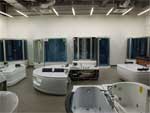 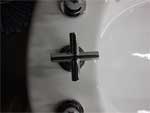
Bathroom furnishings department in China Mart /
Tap with a design resembling Axor Terrano's
There is a duality to how import from China adapts to the local conditions. Since the Hungarian market is small, the demand it represents on the European scale is not very significant and has little opportunity to influence production. Even when Hungarian retailers make their own purchases, the keen price competition compels them to sell those products that the large Western European department store chains buy in bulk and at depressed prices.
In other cases, the Far Eastern products can be very location-specific, because of the flexibility of the production line. Security doors customised for the specifications of Hungarian prefab flats offer a good example: with their variety of surfaces and attractive prices, they present serious competition for European manufacturers.
The metal security doors not only have the appropriate quality assurances, but also provide small treats: the built-in doorbell works with two AAA-batteries, and emits light in the dark. The door handle on the outside also lights up when it is touched, which is a nice example of how technologies developed in other fields can be adapted. If there are illuminated key rings, why shouldn't there be lighted door handles?
Attila Bujdosó
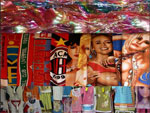 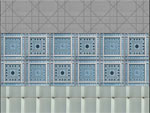
Mass-produced and transported thus cheap products can become compositional elements of tactile architecture - for instance, facade details.
|

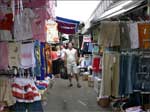
ACCESSIBILITY - With the appearance of cheap copies, the goods of the upper ten thousand have become available for the bottom one million.

DISTORTION - "Accidental misspelling"

The model assumes a life of its own

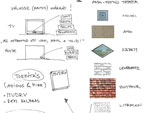
The question of originality is relevant in architectural context. What is more important - the knowledge or the image?
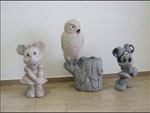
Customization fulfills all needs
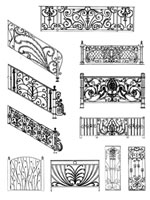
Western European influence comes via China: these wrought-iron fences are exact copies of French models
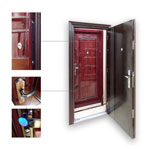
Customized size safety door for Hungarian prefab housing from China |